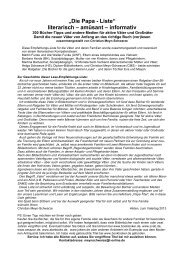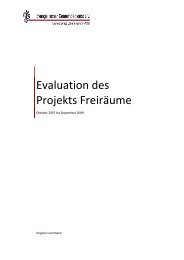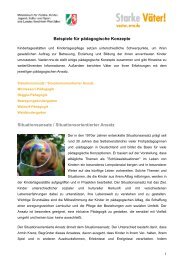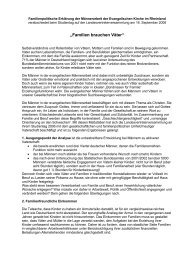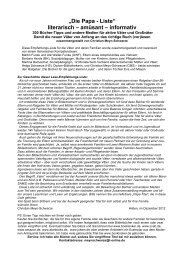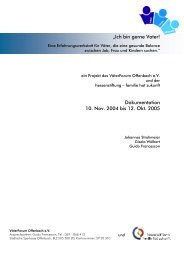LIBRARY
LIBRARY
LIBRARY
- No tags were found...
You also want an ePaper? Increase the reach of your titles
YUMPU automatically turns print PDFs into web optimized ePapers that Google loves.
5FINDING A CUREFOR DIABETESDiabetes is a serious, lifelong condition affecting anestimated 23 million Americans. As one of the leading causesof death and disability in the U.S., diabetes often comes witha host of dangerous complications, including heart disease,blindness, nerve damage and kidney problems. For patientsliving with diabetes, the future means a lifetime of keepingthese symptoms at bay.“Everything we do for people with diabetes is like a Band-Aid,” says Aaron I. Vinik, MD, PhD, director of researchat the EVMS Strelitz Diabetes Center. “It doesn’t get to theunderlying disease.”But that may be about to change. The Strelitz DiabetesCenter, a leader in diabetes research, is working on a rangeof studies that challenge conventional knowledge on diabetestreatment.One of the most exciting areas of research focuses on Type1 diabetes, where the immune system attacks and kills thebeta cells that manufacture insulin in the pancreas. Insulinhelps the body convert glucose from food into energy.Researchers are particularly interested in the role of anenzyme called 12/15-lipoxygenase (12/15-LO) found in theinsulin-producing beta cells. Fats produced by 12/15-LOencourage inflammation and can damage or kill beta cells,says Jerry L. Nadler, MD, director of the Strelitz DiabetesCenter and chair of internal medicine at EVMS.Dr. Nadler – working with Margaret Morris, PhD, aresearch assistant professor of internal medicine – recentlydiscovered that when they delete the gene that produces12/15-LO in laboratory mice,almost none of the test mice goon to develop Type 1 diabetes.“Targeting 12/15-LOexpression at the appropriatetime could provide a new wayto stop the killing within thepancreas and allow the beta cellsto regenerate,” Dr. Nadler says.Currently there are no suitable12/15-LO inhibitors available forhuman testing. Dr. Nadler; SwarupChakrabarti, PhD, research assistantprofessor of internal medicine; and David Taylor-Fishwick, PhD, associate professor of internal medicine,are collaborating with a medicinal chemist at the Universityof California and the National Institutes of Health (NIH)to develop several new 12/15-LO inhibitors. Dr. Nadlerhas received funding from the Juvenile Diabetes ResearchFoundation and NIH for this work.To facilitate the research, Dr. Nadler has receivedpancreatic and spleen tissue from people with Type 1diabetes or at risk of developing the disease. These samplesare provided by the Juvenile Diabetes Research Foundation(JDRF) and the Network for Pancreatic Organ Donors withDiabetes (nPOD). Dr. Nadler has recently been added as oneof the 30 diabetes investigators in the world to be part of thenPOD JDRF program to obtain rare and difficult-to-obtaintissues for research.“We hope to have a new 12/15 LO inhibitor for pre-clinicaltesting by next year,” Dr. Nadler says.AS ONE OF THE LEADING CAUSES OF DEATH ANDDISABILITY IN THE U.S., DIABETES OFTEN COMESWITH A HOST OF DANGEROUS COMPLICATIONS,INCLUDING HEART DISEASE, BLINDNESS, NERVEDAMAGE AND KIDNEY PROBLEMS.MEDICAL BREAKTHROUGHSWWW.EVMS.EDU FALL 2010 33



